World-famous concerns - automobile, pharmaceutical and other - worked for the Nazis. The list of companies that got rich thanks to Hitler is long.
The war machine of the Third Reich could not function efficiently without technical thought, engineers and manufacturers ready to put into production the equipment that was required by the German army. Therefore, Hitler and other officials from the Nazi Party were very eager to associate with industrialists.
Porsche for the people
The Führer realized that industrial power was a valuable element of propaganda. Therefore, as early as 1933, he took care to create a tangible symbol of the prosperity of German society. To this end, he turned to an engineer whom the Nazis called a genius - Ferdinand Porsche. This scientist and inventor developed the design of the electric motor. The vehicle with such a drive was presented as early as 1900, during an exhibition in Paris. Porsche was indeed a visionary - a hundred years ago it designed hybrid cars. He worked, among others for Daimler, until the beginning of the 1930s he decided to start his own production - sports cars.
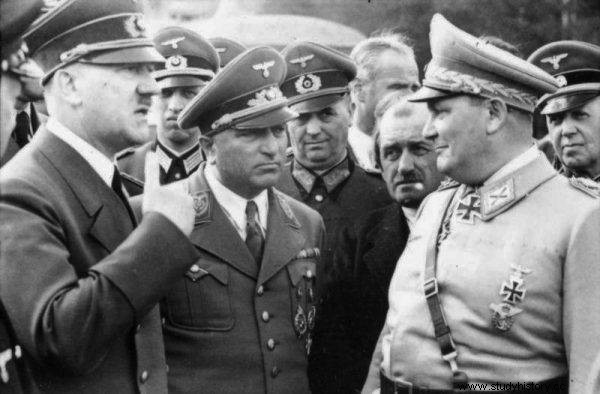
Porsche - as the main designer of the Third Reich - eagerly cherished and rewarded by the Nazis - was ordered to switch to military production.
In 1933, the Führer asked the inventor to develop a cheap car for the masses that could meet the expectations of millions of Germans. Porsche did not refuse Hitler (as he did in the case of Stalin, who offered him a job for the USSR). This is how the original design of the popular Volkswagen Beetle saw the light of day. The prototype appealed to Hitler, who ordered the production of cars for the people ( Volks - wagen ). Porsche, at the behest of Hitler, was given a factory complex for the production of Beetles. Even the working-class city of Wolfsburg was established, from which factory workers were to be recruited. This is how the Volkswagen concern was created. Until the outbreak of the war, however, only a few hundred pieces were produced - for the Nazi tops.
Chief designer of the Third Reich
Porsche - as the main designer of the Third Reich - eagerly cherished and rewarded by the Nazis - was ordered to switch to military production. The result of his work was, among others military off-road vehicle VW type 82 Kübelwagen. The constructor, although praised by the Führer to the heavens, had to endure the bitterness of defeat as well. It was about prototypes of new tanks.
Porsche, which introduced the concept of the Tiger tank, competed with the Henschel project for recognition of the leader of the Reich and its implementation into mass production. Hitler was so interested in the new tanks that, without worrying about his dilettantism, he gave orders on specific technical details. For example, it has decided that the Tiger's frontal armor is to be increased from 60 to 100 millimeters.
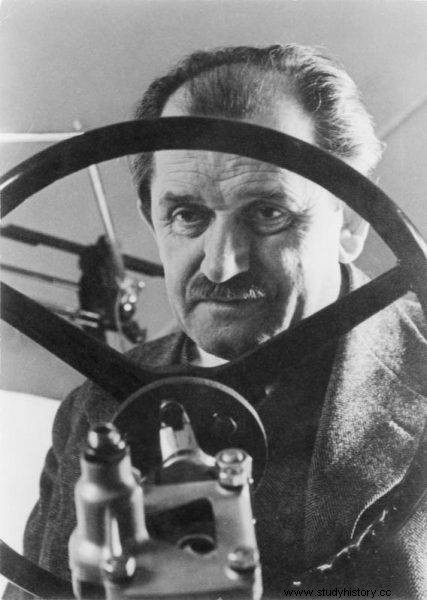
Porsche, of course, bent over backwards to put the chief's commands into action.
Porsche obviously bent over backwards to put the chief's commands into action. Ultimately, however, to the surprise of many and probably himself, he lost to Henschel. There were many flaws in the Tiger, they also turned out to be less maneuverable and slower than the competitor's tanks. Porsche has already produced 90 copies, but had to write them off. The rejected tanks were used to produce the Ferdinand (later the Elefant) - a heavy tracked vehicle .
The end of the war was not kind to the designer. When the Nazi regime crumbled, Porsche was taken prisoner by France as a war criminal. He spent over a year and a half in prison. Eventually he was released, no charges were brought against him, but he fell from grace. After the war, mass production of "Beetles" began, in which Porsche did not participate. Today, historians believe that Porsche, although faithfully following Hitler's orders, was not a Nazi. Fixated on his horse - that is, technology, he might not have been aware of how he participated in a criminal wave. He died in 1951. Three years before Ferdinand's death, his son founded the Porsche factory and started producing sports cars.
With the hands of slaves
It is estimated that during the war the Volkswagen plants switched to military production employed about 12-15 thousand people. forced laborers from labor and concentration camps. Such a camp was even established in the vicinity of Wolfsburg - in Arbeitsdorf - where prisoners from other camps were sent, e.g. from Buchenwald and Sachsenhausen. The practice of using slave labor was common in the car industry of the Third Reich . Daimler-Benz, which produced Mercedes cars, began producing trucks for the German army in 1937, and later also aircraft engines. In 1942, he had to stop civilian production. Army demand was prioritized.
To maintain production, the factory "borrowed" cheap labor from the SS. It was estimated that it was 40,000. forced laborers and concentration camp prisoners - mainly Jews and Slavs from Central and Eastern Europe. Auto Union, the progenitor of Audi, also benefited from free labor. Richard Bruhn, a member of the NSDAP, and since 1932 the president of the concern, supervised the issues related to "HR". Audi only in 2014 admitted to using slave labor. Auto Union factories employed 20,000 people. people in striped uniforms - including 4,000 concentration camp prisoners.
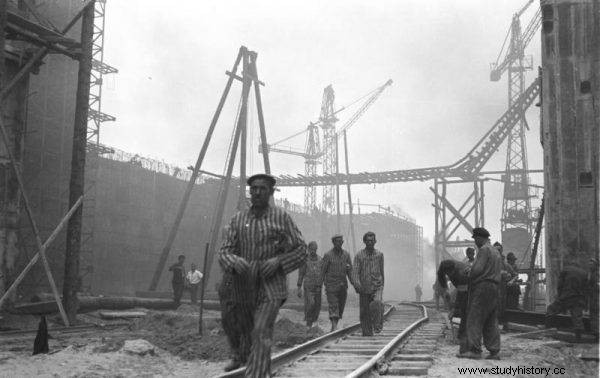
Many German companies made use of the slave labor of camp prisoners.
BMW also did not pay for the hard work. About 20,000 people worked in the factories of the concern, which produced aircraft engines during the war. POWs and prisoners, including those from the Dachau camp. A shadow of the Nazi past also casts on the Quand family, one of BMW's leading shareholders to this day. Günther Quandt - the creator of the power of the family - was considered the greatest industrialist of the Third Reich. His ex-wife, with whom he was in contact after the divorce, married Joseph Goebbels. He also knew Hitler very well. Thanks to his rotation in power circles, he won state contracts, took over companies taken from Jews, produced ammunition for the Wehrmacht, accessories for U-boats, and rifles.
Auschwitz Insurance
An interesting and less known thread of the business cooperation with the Nazis is the activity of the insurance company Allianz. In this case, it cannot be said that the company “only operated” under conditions independent of it. Kurt Paul Schmitt, head of the insurance company, supported the Nazis even before they took power . As early as 1930, the company had contacts with, inter alia, with Hermann Göring. In 1933, the Nazi party backed Schmitt. He began to appear at meetings between industrialists and Hitler. On one of them, he stated that the company had granted the NSDAP a subsidy of PLN 10,000. brands for expenses related to the election campaign. In 1933, Schmitt officially joined the NSDAP. Soon after, he became the Reich Minister of Economy and an honorary member of the SS.
What about Allianz? The company adapted the offer to the requirements of the time. She insured, among others concentration and death camp personnel . The insurer's inspectors even visited these places to get a good look before setting the terms of the policy.
Siemens fencing
The company today associated with household appliances was a real giant of the Nazi industry. It was she who produced a whole range of electrical equipment for the army, including electrical equipment for airplanes and submarines (made, among others, in Bobrek - Auschwitz sub-camp). The prisoners of the camps also made electrical parts, incl. for V1, V2 rockets. The giant employed 200,000. people, of course, a large part of the workers were prisoners of war and inmates in camps. Siemens factories also used stolen devices in conquered countries, incl. in Poland.
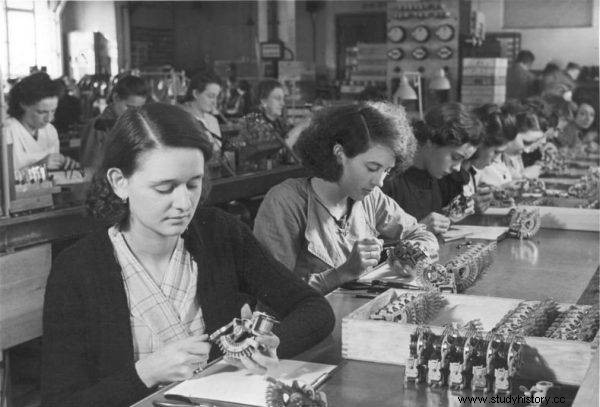
Siemens was a real giant of the Nazi industry
Siemens also produced electrical components for concentration camps - for fences and gates. In turn, Topf und Sohne supplied crematorium ovens. In the first, about 340 corpses could be incinerated a day. However, productivity grew over time. Two crematoria in Birkenau could incinerate over 1,400 people a day. Another - smaller ones - about 700 people each.
The list of German companies that produced for the German death war machine is long. Designer Hugo Boss sewed uniforms for the SS and Hitler Youth with the hands of forced laborers from the Metzingen camp. He himself was a member and sponsor of the NSDAP from 1931. IG Farben supplied Zyklon B to concentration camps, Bayer tested their drugs on concentration camp prisoners, and the giant of the food industry - Dr. Oetker supplied the army with puddings and ... ammunition.
Made in USA (for Führer)
German companies that supported the Nazi regime are, of course, outrageous, but it is even more outrageous that many foreign companies worked for the Third Reich - to this day top brands in the world. Perhaps the most spectacular example is Ford. Henry Ford - a legend of the automotive industry - was also a staunch anti-Semite . He generously subsidized the NSDAP, and privately was a friend of the Fuhrer. The Ford concern has launched its plant in Germany. During the war, he produced, among others trucks for the army.
Another famous case of collaboration with the Nazis is IBM. The oldest IT company in the world provided the Nazis with the so-called punch cards developed by Hermann Hollerith . They were a data carrier for calculating machines. Seemingly, they were to be used to register the population, but representatives of the concern probably knew perfectly well that the real purpose was different. Germany incl. thanks to them, they optimized the transport of prisoners to the camps.
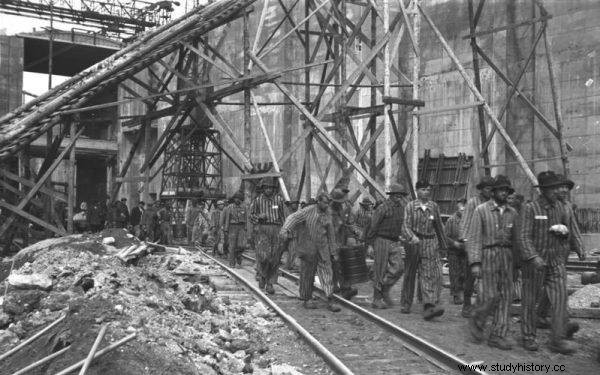
Should the fact of cooperation between business tycoons and Nazi criminals be surprising and outrageous?
Also Coca-Cola - had an episode of supporting the Nazi regime. She was one of the sponsors of the Olympics in Berlin in 1936. The company had opened a factory in Germany a few years earlier. During the war due to trade blockades there was a shortage of ingredients for the German Coca-Cola. A brand manager in Germany named Max Keith then developed a new product based on the ingredients that were available. This is how Fanta was born. After the war, the recipe changed, but the drink survived on the market.
Other companies also worked closely with the Nazis. General Electric heavily subsidized the NSDAP, and during the war it participated in a price conspiracy with the German Krupp, pushing up the prices of tungsten, which is important for armaments. Fuel Standard Oil of New Jersey (Exxon Mobil) collaborated with I.G. Farben, incl. by exchanging patents, thanks to which the Third Reich obtained the technology of refining aviation gasoline. In the context of cooperation with Hitler, companies such as Kodak or New York's Chase Bank are also mentioned.
Pecunia non olet?
Should the fact of cooperation between business tycoons and Nazi criminals be surprising and outrageous? This touches upon a serious moral problem - business ethics. Does profit release from responsibility? Is an excuse for building gas chambers or the supply of Jewish counting machines can just a business account? It sounds cruel and heartless. On the other hand, it is an open secret that even the bitterest enemies rarely completely cut off trade. Often they even exchange scarce products. This was the case, for example, during the First World War. The British lacked lenses and the best optics were manufactured by Karl Zeiss. In return, the Germans were to obtain rubber from the islanders needed for the production of tires.
Today, companies that collaborated with the Third Reich, largely "self-cleaning", publishing extensive reports on this subject (probably for image-related reasons). This is what, among others, German car companies, also paying compensation to former forced laborers. However, this certainly does not close the case. It also does not exhaust the list of questions about the marriage of business and the Nazi regime.
Bibliography:
- Edwin Black, IBM and the holocaust. Strategic alliance of Nazi Germany with the American corporation , Muza SA 2001.
- Jean-Louis Vullierme, Mirror of the West:Nazism and Western Civilization, Warsaw 2016.
- Hugo Boss Acknowledges Link to Nazi Regime , The New York Times (accessed:20/01/2022).
